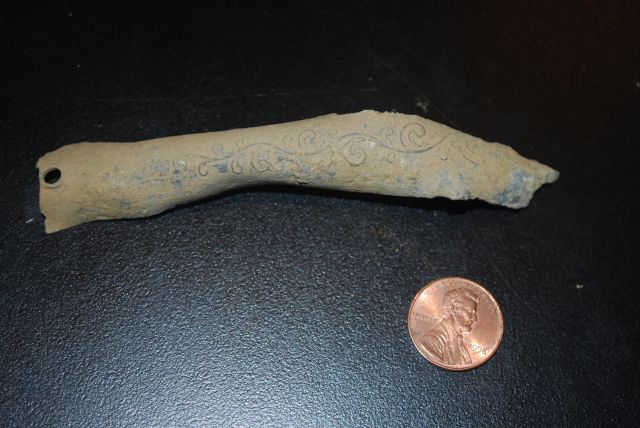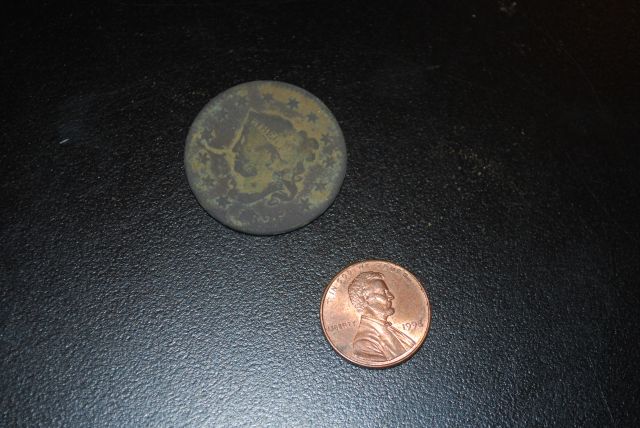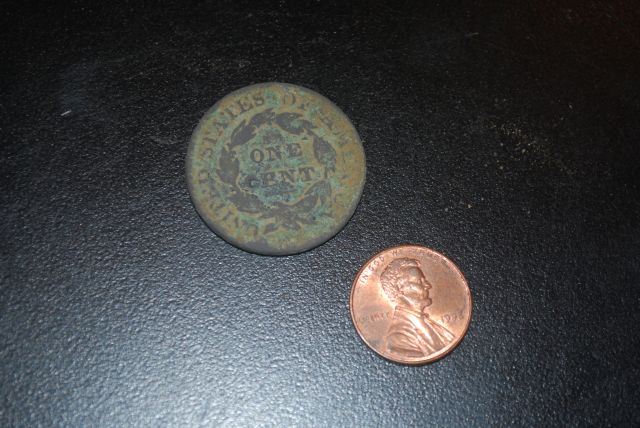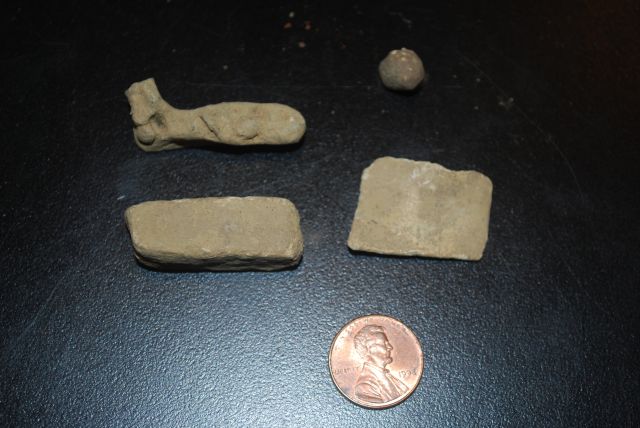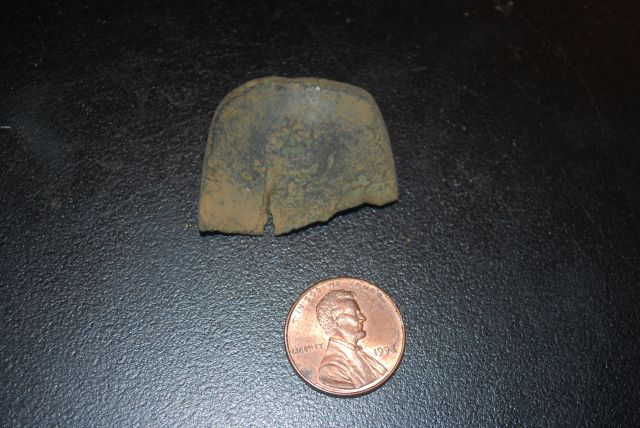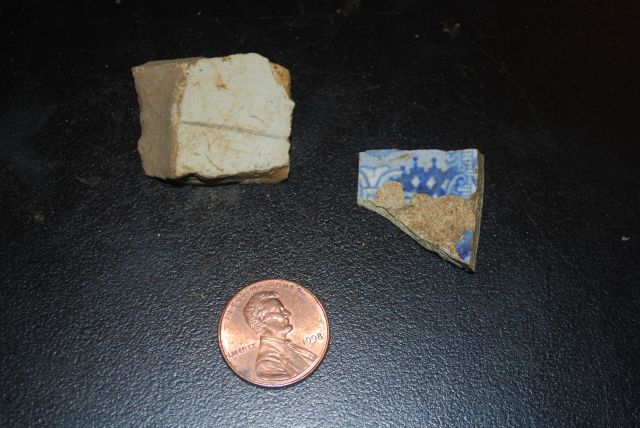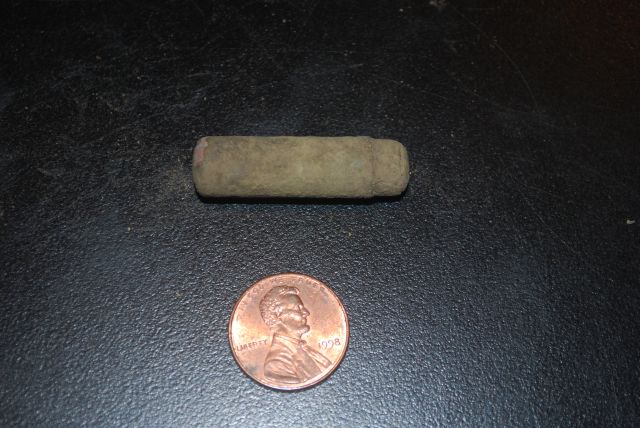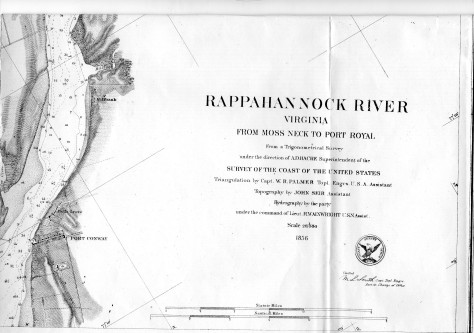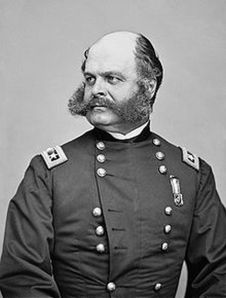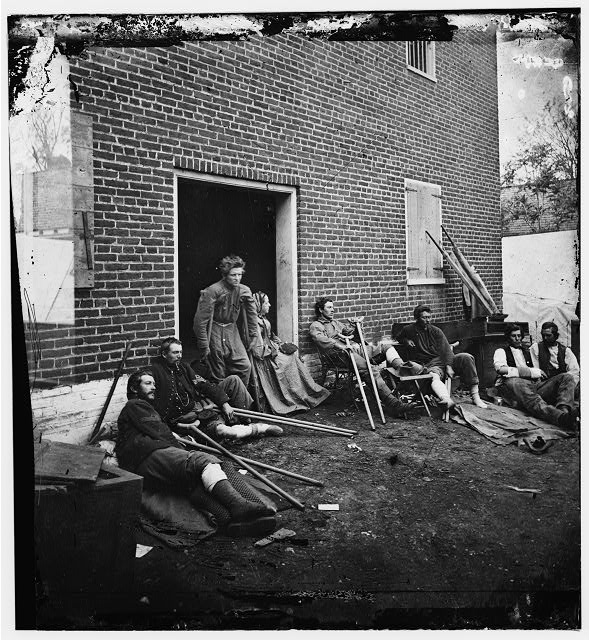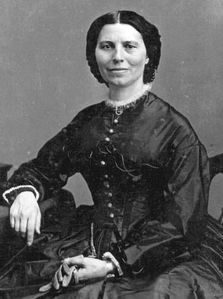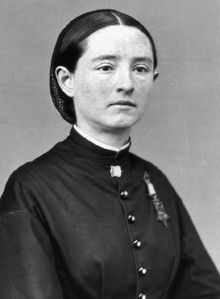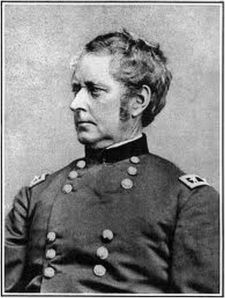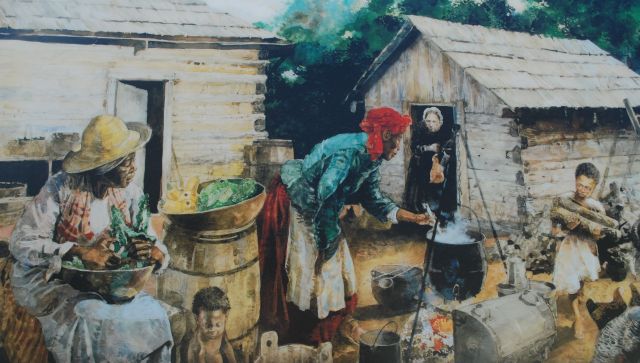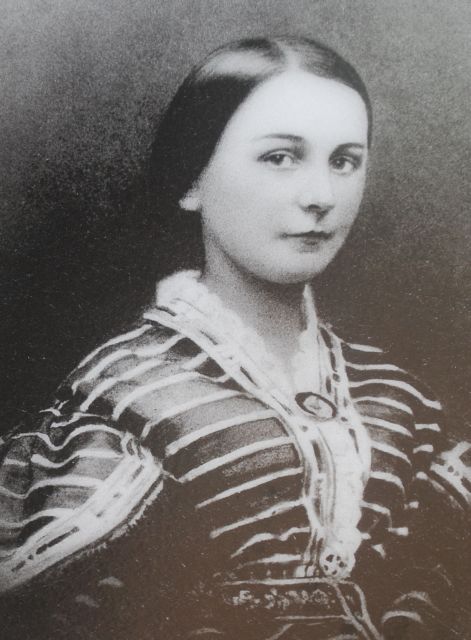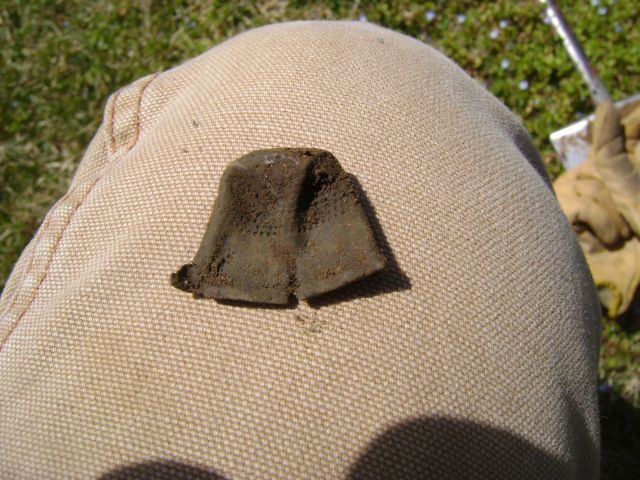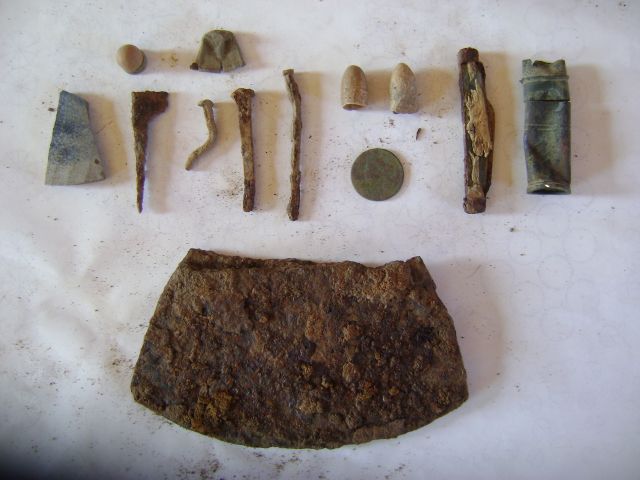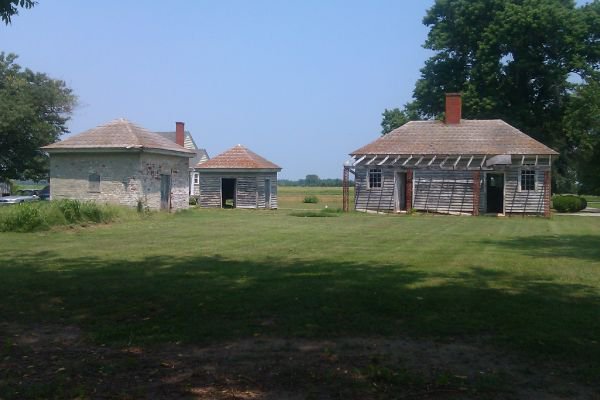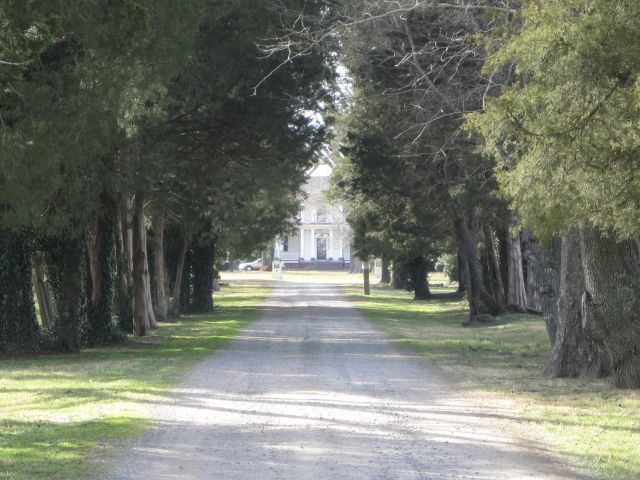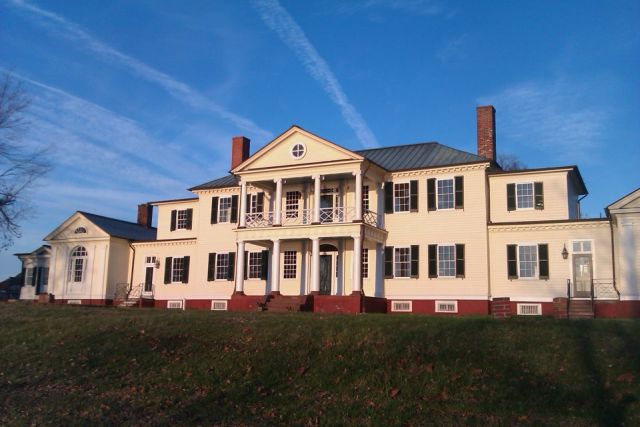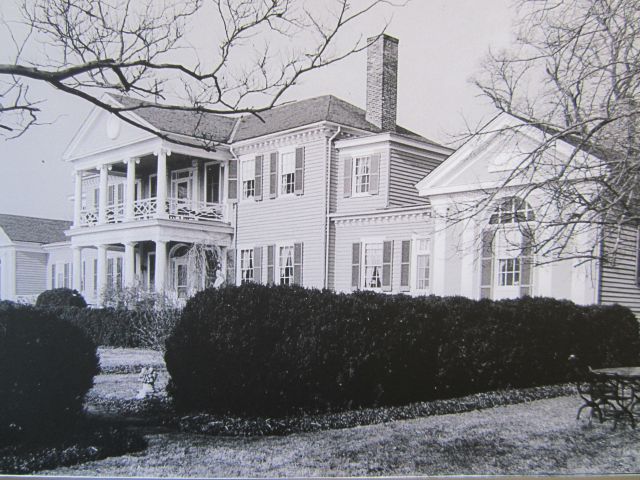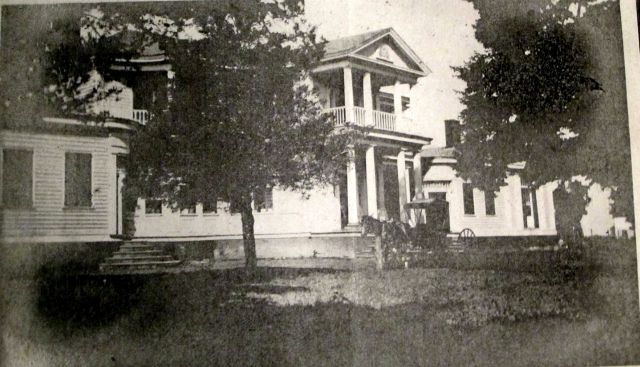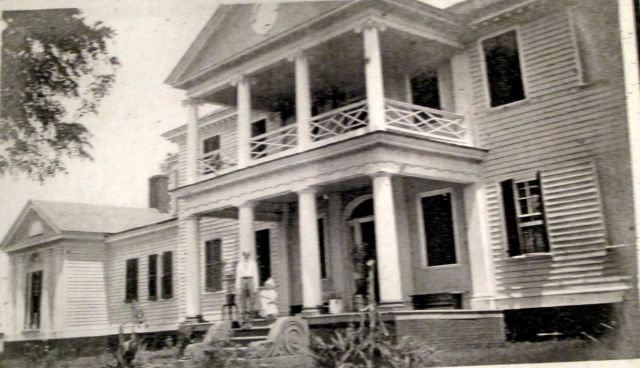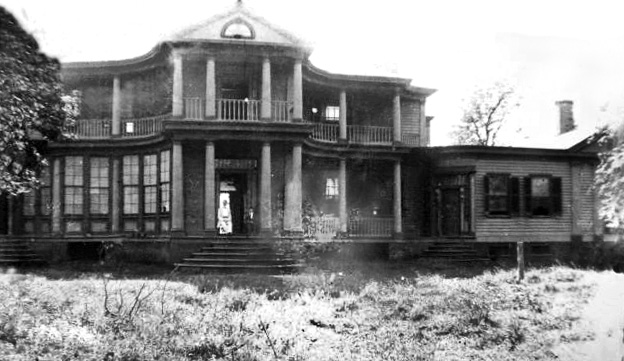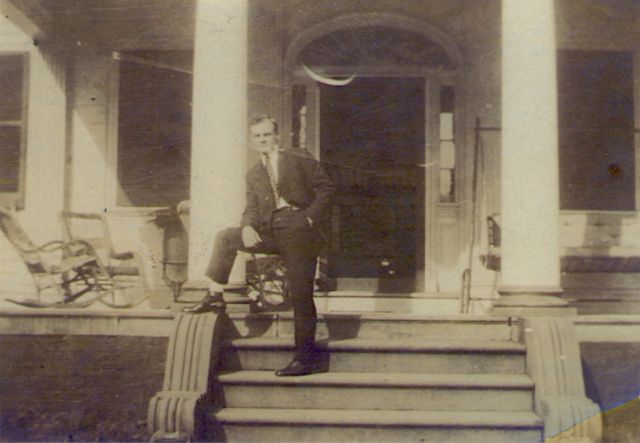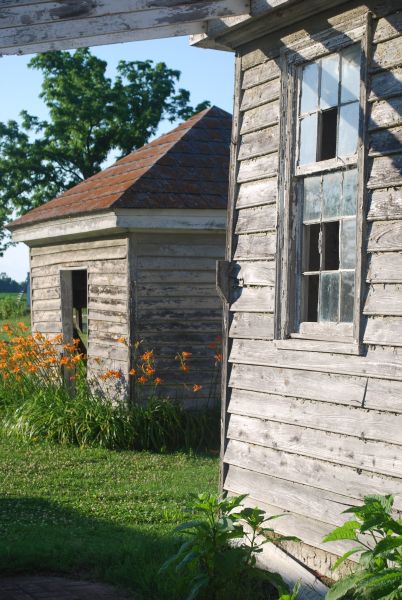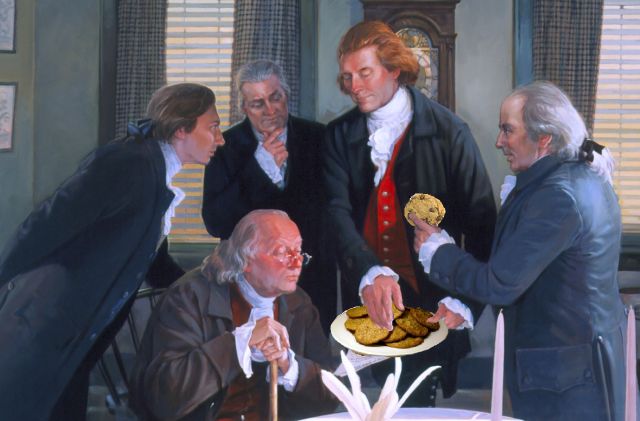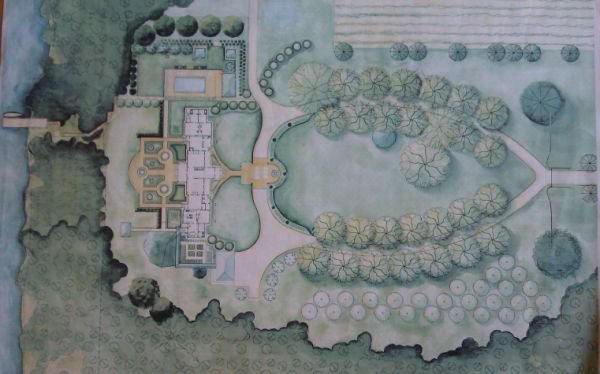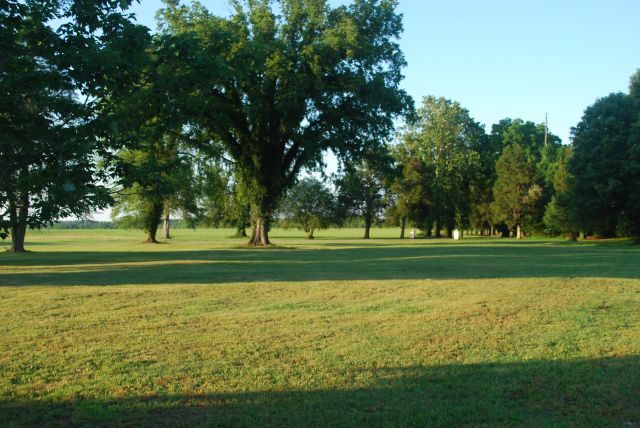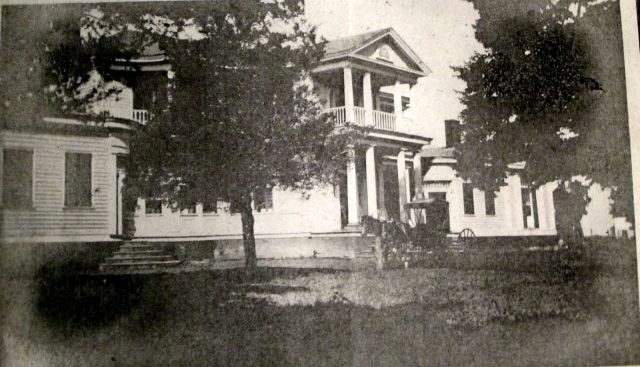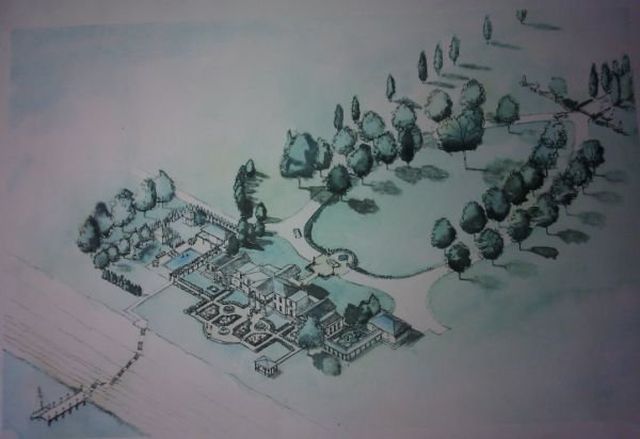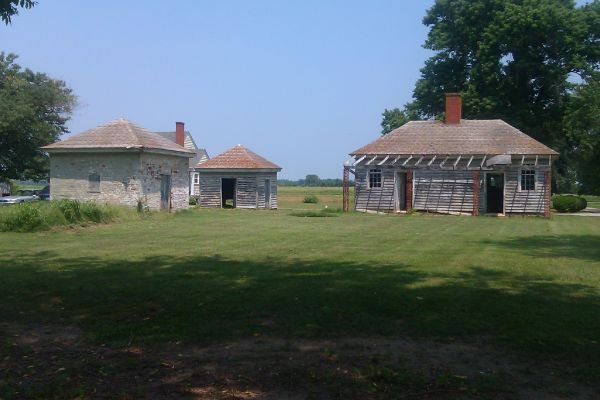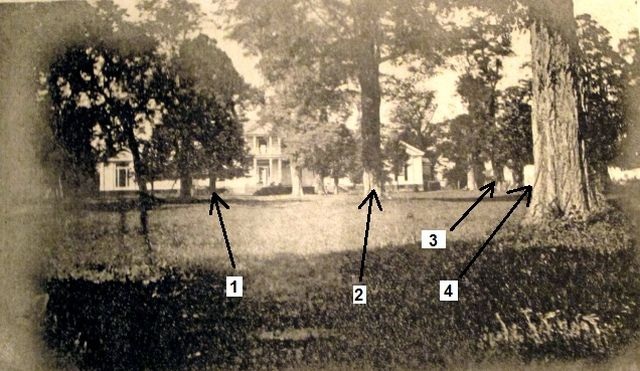Sep. 10th 2012

Outbuildings at Belle Grove Plantation
When doing the research on the history of Belle Grove, I have come across a lot of wonderful surprises. Historic events and people that we as Americans need to remember. But with that research we have also come across darker times in our history. Not to include it in the history of the plantation would be a disservice to those who lived it and died by it. It is important to know where it came from and how it evolved and what impact it had on Belle Grove Plantation.
When looking at the history of slavery in Virginia, we can trace it back to the founding of the English colony by the London Virginia Company. The London Virginia Company was an English Joint Stock Company that was established by James I of England on April 10, 1606. The London Company, which was also known as the Charter of the Virginia Company of London was established by royal charter with the purpose of establishing colonial settlements in the New World. It was through this company that a system called “Headright” was put in place to entice settlers to venture to North America.
A “headright” was a legal grant of land that was given to settlers. To obtain a “headright” the settler would not only have to travel to the New World, but also bring indentured servants with them. The amount of land given was determined by the number of indentured servants brought. Most “headrights” were for 1 to 100 acres of land. The most common amounts were 50 acres for someone newly moved to the area and 100 acres for those who previously living in the area. By giving land to the landowning masters, the indentured servants had little or no chance to gain their own land.

Indentured servitude was a historical practice of contracting an individual to work for a fixed period of time in exchange for transportation to the New World, food, clothing, lodging and other necessities during their term of indenture. The general time period would be three to seven years. Most indentured servants were men and women under the age of 21. Generally their fathers would make the arrangements for them and sign their paperwork. There was no cash paid to the family for the individual. The labor markets were overcrowded in Europe and this system provided jobs to poor young people who wanted to come to the New World for work, but had no way to pay for it. In 1650, there were approximately 4000 white indentured servants working in Virginia. Many would earn their freedom and would receive a grant for 50 acres of land when released from their indentures. Here they would raise their own crops such as tobacco.

African workers were first imported to Virginia in 1619. By 1650, there were about 300 African workers living in Virginia. That was about 1% of the estimated 30,000 population. Some of these indentured servants would go on to earn their freedom and would be able to buy land for themselves.

Just to the south, there were Spanish colonies that had long been using slavery for labor. The first recorded instance of slavery in the Virginia Colony wasn’t until 1654. This was a lawsuit brought to court by Anthony Johnson of Northampton County on Virginia’s Eastern Shore against another land owner, Robert Parker over an indentured servant named John Casor. It was Anthony Johnson’s contention that John Casor, an African man, owed him lifetime services.
Anthony Johnson, also an African man, had been brought to Jamestown along with 19 other African men as indentured servants. In 1623, Anthony Johnson had earned his freedom and in 1651 had gained enough wealth to import five “servants” of his own. This import earned him 250 acres as a headright.
John Casor alleged that he had come to Virginia as an indentured servant and had sought to transfer his obligation to Robert Parker, a white farmer. Anthony Johnson claimed in court that “hee had ye Negro for his life”. The Northampton County Court ruled that Robert Parker had unjustly kept John Casor from Anthony Johnson. It was the Judgment of the Court that John Casor be returned to Anthony Johnson and that Robert Parker would make payments for all charges in the suit. John Casor did return to Anthony Johnson. This was the first known judicial approval of life servitude in Virginia with the exception as punishment for a crime. John Casor remained with Anthony Johnson for the rest of his life.
By the end of the 17th century, large numbers of slaves from Africa were brought to the Virginia Colony by Dutch and English ships. These slaves were placed on large tobacco plantations and would work as field labor, household and skilled workers. Slowly these slaves would replace the indentured servants. As slaves, they not no mutual agreement and no time limit for their labor. Even the children of these slaves were born to a lifetime of service. In 1661, Virginia passed a law that made the status of the mother determine the status of the child. In time, slavery would become an economic factor on labor-intensive tobacco and cotton plantations of the South.
In my research, the earliest record I have been able to uncover of slaves at Belle Grove Plantation dates back to the Will of Francis Thornton, husband of Alice Savage Thornton and third landowner of Belle Grove Plantation. Francis Thornton passed away in 1726. In his will he bequeath the following:
“I give and bequeath unto my grandson Francis Conway one mulatto girl names Bess. Item: I give and bequeath unto the within named George Riding son of my wife Ann, five slaves by name – Mullato James, Negro Dick, Negro Jane, Negro Nanny and a negro boy names Samuel. Item: I give and bequeath unto Margaret Riding, daughter to my wife Ann Thornton, six slaves by name – Negro Charles, a girl named Peggee, a Negro girl names Frank, Negro Susan, Negro Billy, a Mulatto Jacob. Item: The rest of my Negroes I give and bequeath unto my loving wife Ann Thornton during her natural life and after her decease I will and bequeath all my said Negros to be divided by equal portions between George & Margaret Riding, son and daughter of my wife Ann Thornton.”
Alice Savage Thornton passed away in 1692 and Ann Thornton was Francis Thornton’s second wife. His grandson, Francis Conway who received one mulatto girl named Bess would become Belle Grove’s fifth landowner and was Grandfather to James Madison.
The next record of slavery comes with the Will of Edwin Conway, husband of Elizabeth Thornton Conway and Great Grandfather of James Madison. His son was Francis Conway in the below paragraph. He passed away in 1698. In his will he bequeathed the following:
“I also give to my sd sone Francis, three negroes, Sam & Kate & Frank, their child, to him…Item, I give unto the child, or children, whereof my wife now goeth withall, the crop of sweet scented tobacco that is now below at my lower plantation, to be put into the hands of Henry and Edwin Thacker and sent for England, and when money is made from the sale of the same, They, to buy two negroes, such as in their discretion they shall think fit, and to bee delivered to their mother, for the saide child, or children. Item, I give to my sone Edwin, all that estate, both real and personal, which I formerly gave him by deed of gift, recorded in Lancaster Court, with all and every part and parcel of my estate in Lancaster County, not before given, except one negro man named Jack.”
The next Will that speaks of slavery is that of Rebecca Catlett Conway Moore. Her first husband was Francis Conway. Her second husband was John Moore. John Moore was who gave Belle Grove it’s name. She was mother to Nelly Conway Madison and Grandmother to James Madison. She passed away in 1761. In her will she bequeath the following:
“and by virtue of said will did on 16th day July last past make choice of the five Negroes •• I bequeath unto my son WILLIAM MOORE when he attains age of Twenty one and to my grandson JAMES MADDISON junr. when he attains Eighteen years of age to be equally divided between them.”
The last Will that speaks of slavery is that of William Bernard Sr. He was husband of Fannie Hipkins-Bernard. Her father, John Hipkins built the center section of current manor house for her and her husband. In his will he bequeathed the following to his son William Bernard Jr:
“… to my beloved wife (Elizabeth Hooe)……the use of four of my Slaves that she may choose and the use of two female Slaves she may choose till they arrive to fourteen years of age…and if any of the Negroes she shall have chosen shall die or when the two negroe Girls shall have arrived to the age of fourteen my Executors Suffer her to choose others in their place except such as may be employed as house Servants by either of my Children…all my Negroes & Mulattos be divided……to my Son William I give all the Negroes and their Increase that came by his Mother together with the other half of such as I hold in my own Right.”
William Bernard Jr. never received this bequeath. William Bernard Jr. passed away in 1822 and was the last of the Hipkins-Bernard family to live at Belle Grove. His father wouldn’t pass until 1844.
The last records of slavery that I have found was that of Carolinus Turner. In Federal Census Records, I discovered the number of slaves that Carolinus Turner owned during his time at Belle Grove. The 1840 Federal Census lists Carolinus Turner, age 20-30, along with eleven male slaves under ten, eight aged 10-24, five aged 24-36, four aged 36-55, one aged 55-100, twelve female slaves under 10, eight aged 10-24, five aged 24-36, and three aged 36-55, for a total of 58 in the household, with 31 involved in agriculture. The 1850 Federal Census lists Carolinus Turner at 37, a farmer and worth $100,000. He owned 73 slaves at the time. The 1860 Federal Census lists Carolinus Turner at 47, farmer and worth $272,500. He owned 92 slaves.

Death Records of Slaves in King George County
From all the records I found, Carolinus Turner’s time period contained the best documentation. I was able to pull death records for King George and was able to put names to some of the slaves of the Turners. Here is some of the names from this list:
Warner Stuart, son of John and Susan Stuart died on November 20, 1853 at the age of one year, three months and four days of unknown causes.
Charles Washington, of unknown parents died on May 23, 1855 at the age of fifty-five of ulcer in hands.
Richard Martin, son of Joseph and Harriet Martin died on May 14, 1855 at an unknown age from Scarlett Fever. There were several children that died in 1855 from Scarlett Fever; three in the month of May.
I was also able to put a name to an overseer during the Turner period. His name was Baldwin Lee. He had an assistant named Francis Roach. Francis and his wife Ellen lost a child, Francis Roach Jr. to Scarlett Fever at the age of eleven on November 14, 1853. I don’t have much information on Baldwin Lee or Francis Roach. The only information I was able to find on Baldwin was that he took his own life in 1868.
During the Civil War, many slaves were taken by the Union Army. As I was looking through the archives, I came across a file of small sheets of paper. Written on each piece of paper was the number of slaves that were taken by the Union Army from an owner in the area. It was as if they expected to be reimbursed for their loses.
I have been searching for some records or maps of Belle Grove before or during the Civil War that might give me some idea where the slave quarters would have been. I was told that someone has a map that showed a slave quarters located in the middle of the field at Belle Grove. We have several dirt roadways, many dating back to the early 19th Century.
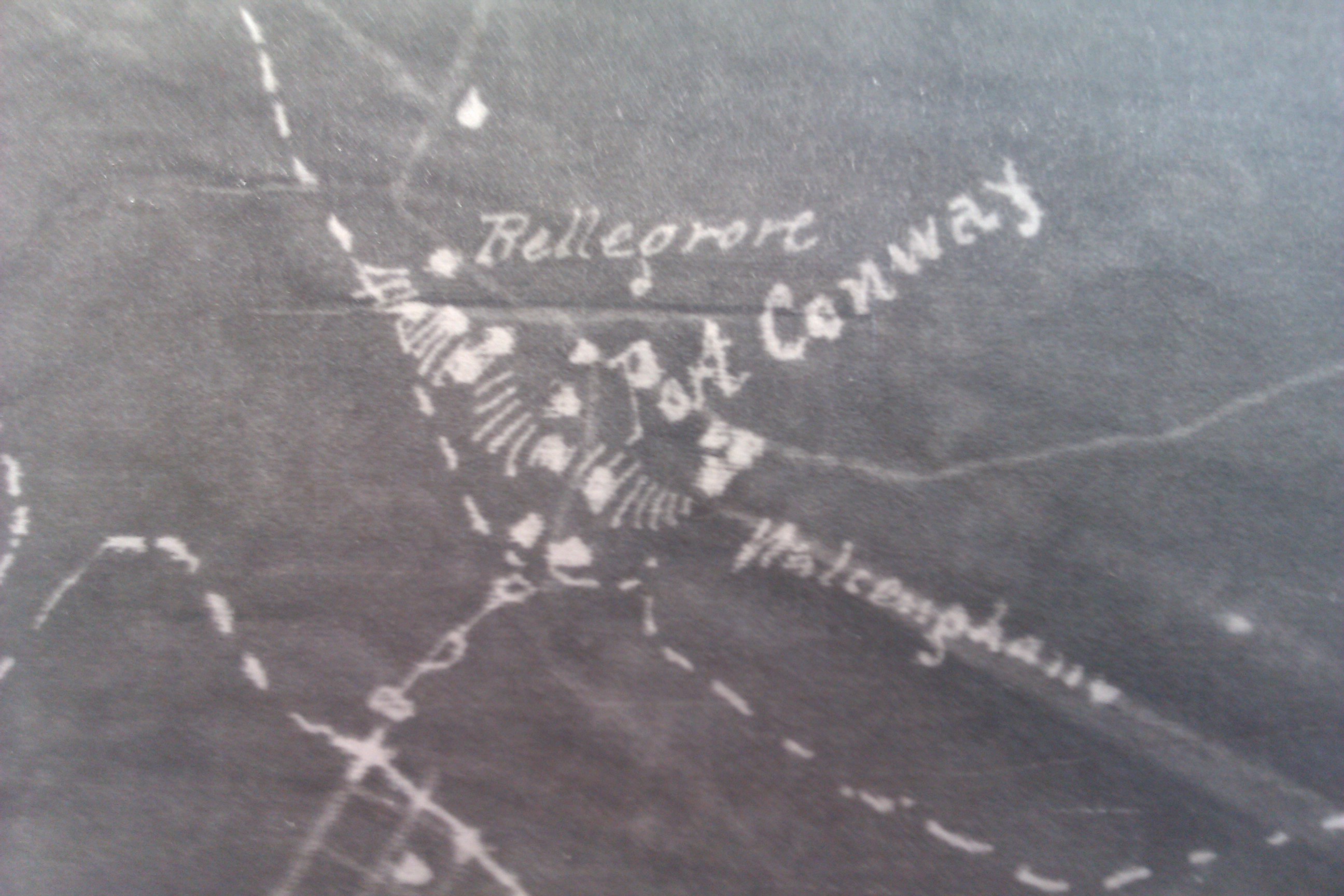
Map of Port Conway and Belle Grove – 1854
I have located one map that I feel might tell me that there were quarters even closer to the house than that. On this map, you can see where the manor house is and the roadways are. But in the field, which is now located behind the caretakers house, there looks to be a grouping of some sort. Some have told me it could have been an orchard. But this “orchard” extends down and around a roadway to what I think may have been a wharf for shipping at one time. Also when I was walking the plantation back in March, 2011, just beside this area between it and the driveway on the grassy area that separate it, I found two plate shards that date back to the late 1700s to early 1800s. My thought is that there could have been a trash pit nearby. Could it be one used by the slave quarter?

Summer Kitchen
built in 1790s
Our best record of slavery at Belle Grove is our 1790s Summer Kitchen. This kitchen was built with a small kitchen on the right and small living space on the left. What makes me think that it was living quarters instead of perhaps a laundry is the size of its fireplace. The kitchen side of the Summer Kitchen has a very large fireplace that still has the iron rod attached to the back of the fireplace wall and the iron hooks that were used to hang pots to cook. The living quarter side’s fireplace is much smaller and has no iron rod or hooks and has no mantle.

Fireplace on the kitchen side of the Summer Kitchen

Fireplace on the living quarters side of the Summer Kitchen

Iron Rod with Cooking Hooks
Fireplace on the kitchen side of the Summer Kitchen
My research is not done and I am sure I will find more on the families that lived there. It is our hope that we can restore the Summer Kitchen and convert it into a small museum of what life was like at Belle Grove. Our plan is to house the artifacts and information we uncover on the owners and house in the kitchen side. We would like to devote the living quarters on the left side to the slaves that served Belle Grove. It isn’t the best part of history of the plantation, but it needs to be remembered, lest we forget.








